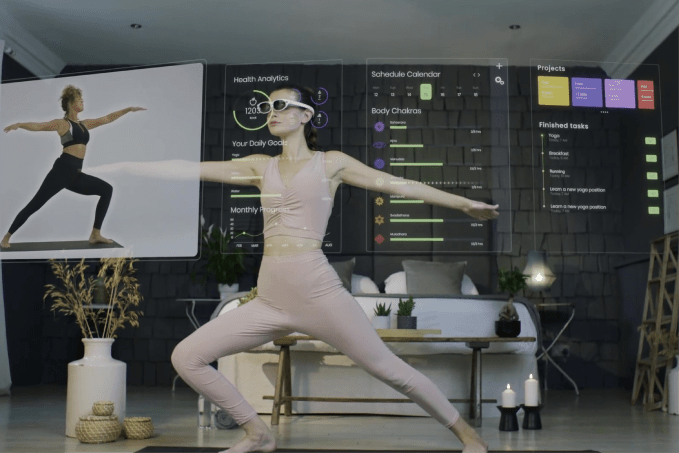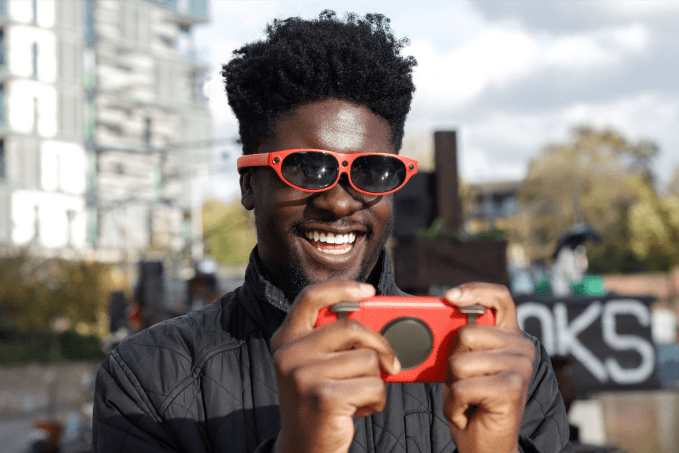By Patrick Liu, CEO, PhotonLens
Augmented Reality is coming to the fitness industry and has the promise of changing the way people think about fitness technology. This is not a simple story of users choosing a smart glass over a gym membership, or Augmented Reality (AR) hardware replacing Fitbit or Peloton. Instead, AR will start to appear in more traditional fitness technology (FitTech), while AR smart glasses and headsets will bridge the gap between gaming and traditional fitness activities. FitTech will use more AR, and AR hardware will enable software that gamifies workouts and makes gaming more physically active. As a former CEO of a mobile gaming company, I think that sounds like an exciting future.
The gamification of fitness
The pandemic was an earthquake for the fitness industry, upending the business models of gyms and moving workouts outside or into the home. Smart bikes, smart mirrors, wearables, and other home fitness equipment flourished, with sales in home fitness doubling to $2.3 billion. With vaccinations moving along and lockdowns lifting in many places, schools and gyms are slowly re-opening. Some people will continue to enjoy working out from home, but many sorely miss exercise in physical locations and the social aspects of exercising together. Successful post-pandemic FitTech will allow people to do both. With AR, it’s possible to livestream and workout with others digitally, while still remaining safely and conveniently at home.
Companies like PhotonLens are creating AR headsets for many fitness applications, such as boxing, ping pong, and yoga. These apps add to a traditional sports activity in a number of ways: interaction with celebrity trainers, safe immersion in active gaming environments, and most importantly, gamification of your fitness routine. At PhotonLens, we take gamification pretty seriously; our founders are all former mobile gaming company leaders.
Neuroscience research shows that people are more likely to make habits of activities that they enjoy and that we quickly get bored with repetitive tasks. Studies suggest that 44% of inactive people don’t exercise because it is not fun. The stakes for promoting fitness now are high: studies suggest that people did 32% less physical activity during the pandemic and that obesity among young people increased as life became more sedentary. Previous fittech has either tried to simulate activity (treadmills, for example) or inform you about what you are doing (fitbits, for example). While these devices make exercise easier and more convenient, they don’t do much to make the experience more fun.

Image Credits: PhotonLens (opens in a new window)
XR has the power to make exercise more exciting by gamifying your workout, and the reports on XR fitness games are showing incredible returns. Anecdotal evidence abounds, and studies have found that 15% of VR games burn enough calories during typical play to qualify as medium to intense exercise. Fitness and sports games make up 5 of the 12 top-selling games on the Oculus Quest store.
AR builds on the core strengths of VR fitness, along with a number of practical advantages to other forms of fitness tech. Unlike VR headsets which can cause dizziness and pose some safety issues in fitness, AR headsets mix your physical environment with virtual projections, allowing you to stay present in and aware of your real world. AR smart glasses can even enable entirely new sports – think dodgeball with force fields, airborne boxing, and rockclimbing-meets-arcade-games (take Valo Motion’s games, for example).
What are the technological gateways?

Image Credits: PhotonLens (opens in a new window)
To make that dream a reality, three things must happen: the tech must work, consumers must buy in, and companies must deliver. I’d argue that the tech works. Advances in the newest generation of AR hardware open the door to these possibilities in fitness.
New AR headsets are lightweight enough to support fitness and active gaming. Rapid body and head movements are difficult and strain the neck when a user is wearing a heavy headset. VR headsets and big enterprise AR headsets usually weigh in at 500g, and even lightweight AR headsets used to weigh 250g. That is a lot of weight to strap to your face and then try to exercise. New consumer-facing AR glasses weigh in at around 80g. With lighter, more sunglass-like designs, AR glasses allow for more air flow around and between lenses and user’s faces, preventing nasty sweat deposits and making for easier cleanup.
Controller capabilities also have a major impact on fitness uses. Older generations of AR headsets supported single TV-remote-style controllers, supported by hand and gesture recognition. These older controllers were useful for presentations and office collaboration, but for use cases where precision matters, hand gesture recognition often isn’t enough. For AR controllers to rival the power of VR controllers, they must be dual, wireless, and have 6 degrees of freedom (6 DoF). This allows for movement to be accurately tracked along 6 axes to pinpoint the position and orientation of the user’s hands.
Lightweight devices with dual 6 DoF controllers are the most obvious gateways for the widespread use of AR in fitness, but as AR nears the tipping point of consumer adoption, there are a host of important “background” technologies that are also improving drastically. Computing power matters. AR hardware needs to use next-generation platforms built for XR uses (such as the Qualcomm Snapdragon XR2). SLAM technologies need to be good enough that devices can recognize a variety of hand gestures and create maps of a user’s environment to mix with virtual media (as opposed to a static and unconvincing projection of media that’s not mixed with your environment).
Connection speeds also make a difference for AR’s long-term growth. Current home wifi speeds can support good VR and AR software now, but 5G speeds will be important to support advances in SLAM, better AR software, and lightweight standalone AR headsets. 5G will be especially important to support AR uses beyond the limits of wifi, such as projecting movies or productivity tools on the go, or supporting outdoor workouts and sports like cycling and golf.
The coming revolution

Image Credits: PhotonLens (opens in a new window)
Like any emerging technology, AR still has some way to go, but the path past the tipping point of mass consumer adoption has never been more clear. We have passed many of the technological gateways. When we pass that consumer adoption tipping point, AR will be the most significant hardware breakthrough in the consumer internet since the smartphone. That is a soaring claim, but the numbers back it up. Between 2007 to 2012, global smartphone shipments saw a compound annual growth (CAGR) rate of 42.8%. In comparison, mobile AR is projected to achieve a CAGR of 39% between 2019 and 2024, with AR media & content creation (software that enables companies to build consumer-facing AR) spending hitting an incredible 65% CAGR during that time frame.
With the technology and the market coming into line, all we are waiting for is the right companies ready to lead the advance of AR into new industries and to use AR as a force for good. AR can make new modes of exercise possible, create new sports, and broaden the community of people for whom fitness is a hobby, contributing to a healthier, happier world. At PhotonLens, we think we’re doing just that. If all this sounds exciting, I encourage you to learn more about PhotonLens, or better yet, support our product launch on Kickstarter!